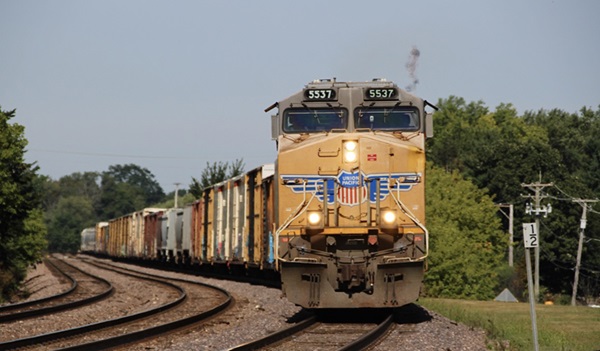
OMAHA, Neb. — Union Pacific’s second quarter profits and revenue rose despite service problems that prompted the railroad to meter traffic, a move that helped keep the network fluid but came at the expense of lost volume.
“We understood that the actions we took to improve fluidity would impact our financial performance,” CEO Lance Fritz said on the railroad’s Thursday morning earnings call. “Those actions were necessary to increase the speed of our recovery and be in a better position to handle customer demand. The improvements we’ve made since mid April give me confidence that we will grow volumes as we continue to improve service in the third and fourth quarters. There’s more to be done, but we’re moving in the right direction.”
UP’s volume was down 1% for the quarter as it stored some railroad-owned cars and placed limits on some types of traffic amid ongoing crew shortages. Absent the metering, UP would have expected volume growth in line with the 4% increase in first quarter volume, says Kenny Rocker, executive vice president of marketing and sales.
For the second time in two months, UP lowered its financial outlook for the year due to rising costs and the impact of congestion on its volumes. Stronger growth in the second half of the year should produce full year carload growth of 4% to 5%. UP expects its operating ratio to improve over the next six months but the full year operating ratio is projected to be 58%. UP was originally targeting an operating ratio of around 55%, its long-term goal.
For the quarter, UP’s operating income rose 1%, to $2.49 billion, as revenue rose 14%, to $5.8 billion. Earnings per share increased 8%, to $2.93.
The railroad’s operating ratio rose 5.1 points to 60.2% as operating expenses shot up 25%.
UP’s performance metrics deteriorated compared to last year due to the impact of crew shortages and related congestion. Car miles per day sank 12%, average train speed was down 6%, and terminal dwell rose 7%. Intermodal on-time performance declined 9 pints, to 62%, while manifest and auto shipment performance declined 11 points, to 56%. But operational performance metrics generally improved as the quarter went on.
Eric Gehringer, executive vice president of operations, says he’s confident UP’s conductor hiring efforts will get the railroad back to full crew staffing levels and meet the railroad’s target of hiring 1,400 train and engine employees this year.
This year 486 conductors have graduated from training classes and entered active service, while 400 of the 504 conductors currently in training will graduate by the end of October, Gehringer says.

Fritz was asked whether UP’s Precision Scheduled Railroading operating model was successful and sustainable in light of service problems, and whether the railroad would need to get back to employment levels of 2018, when it had 27% more people on the payroll.
“Let me start first by saying emphatically that PSR is not the cause of our problems in the second quarter. When you look at our pre-transformation to today, all of that headcount change is because we took work out of the network,” Fritz says. “We run one-third fewer trains, which require one-third fewer locomotives, and also one-third fewer people running the trains and maintaining the locomotives.”
UP also reduced the amount of switching as well as the number of specialty commodity unit trains on the network by blending the traffic into merchandise trains.
Fritz says crew shortages – not PSR – are behind UP’s service problems.
“Here’s where we got into trouble. We ran the network tight, and we did not recognize the stack-up of risks that were in front of us with COVID continuing to impact crew availability, growth coming on, and normal weather events,” Fritz says. “When you run tight, you just don’t have a lot of opportunity to recover quickly. We got into trouble, and inventory grew on us, and we had to take some pretty significant measures to fix that. And we did in the second quarter.”
UP’s bulk traffic declined 1%, industrial products business increased 6%, and premium traffic, which includes intermodal and automotive, declined 5% despite an 11% rebound in automotive traffic. The premium segment was weighed down by an 8% drop in intermodal, which was driven entirely by a decline in international traffic.
UP has a positive outlook for the remainder of the year on every business segment with the exception of international intermodal, grain, and petroleum.






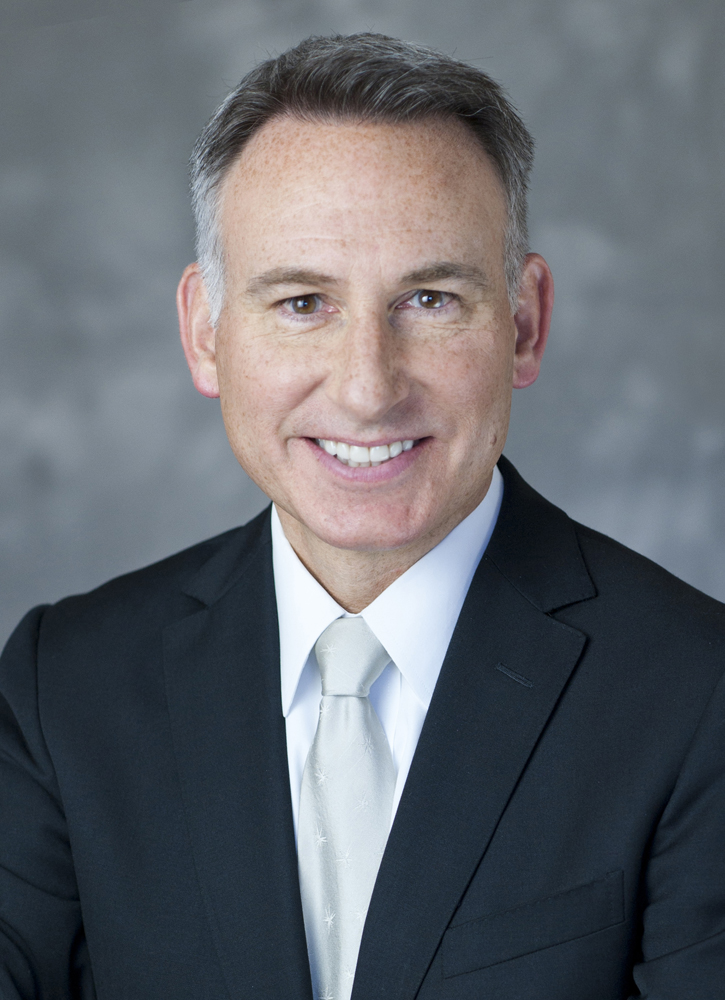
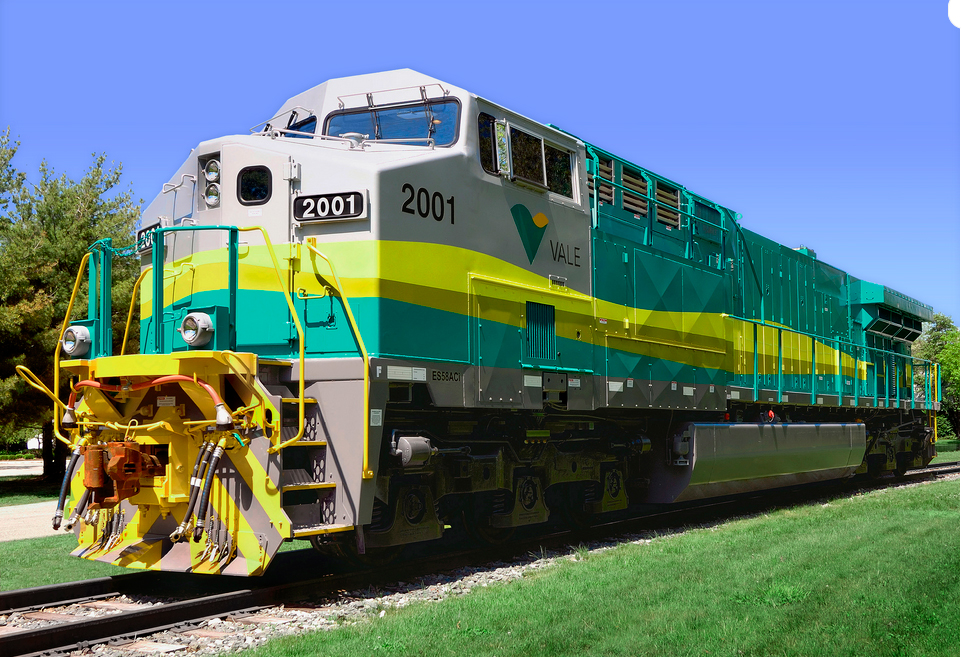
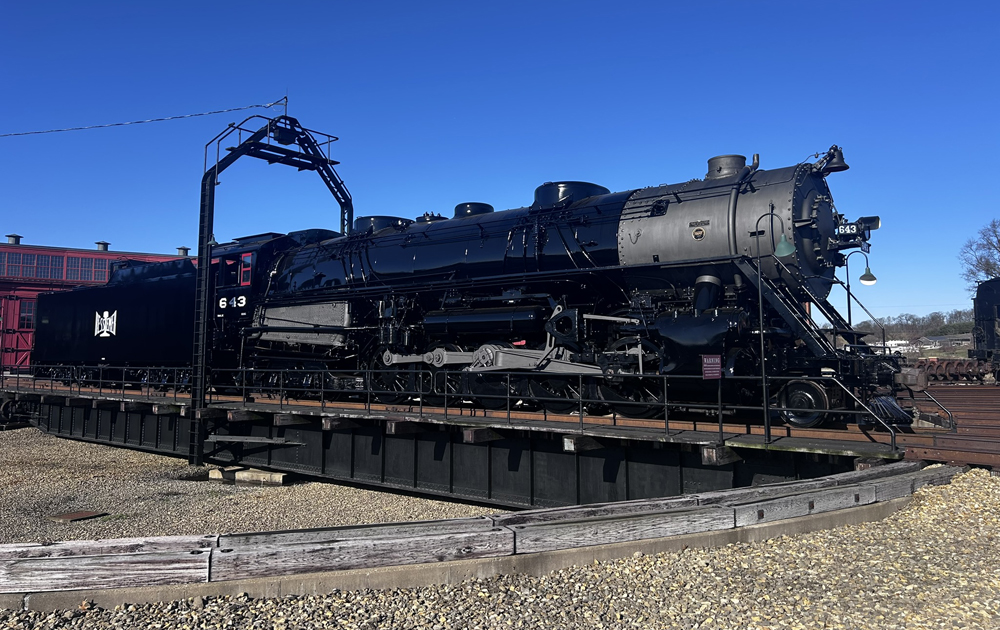
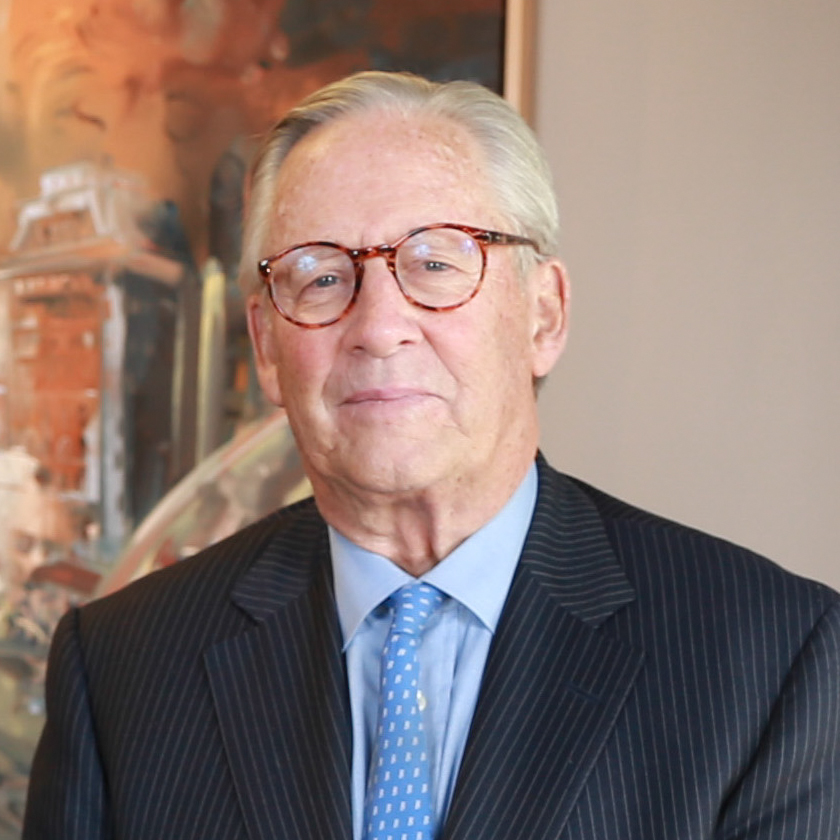




That jerk bait doesn’t realize if you run one third less trains that means you are putting more tonnage on the ones they do run and thus require MORE horse power. Geeeeeeeeeeeeeeee.
PSR caused the crew shortage. and the CEOs worship of wall street made it worse
The statement by Fritz really puts the onus on management. Just because you run 1/3 fewer trains does not mean 1/3 fewer locos. Any rr needs so much HP to move so much tonage. Granted a slight eed for locos might be required but fewer trains mean more locos might be needed for those trains arrive at destinatio means longer layovers.
Fritz says. “We run one-third fewer trains, which require one-third fewer locomotives, and also one-third fewer people running the trains and maintaining the locomotives.”
“Fritz says crew shortages – not PSR – are behind UP’s service problems. “Here’s where we got into trouble. We ran the network tight… “When you run tight, you just don’t have a lot of opportunity to recover quickly…
Well Mr Fritz, it sounds like you contradicted yourself and that it sure does sound to me like it IS a PSR problem! You state you cut one third of your trains, crews, and locomotives under the PSR operating model. Then you state that you ran things so tight (as a result of that model whether you want to admit it or not) it left no wiggle room in the system.
And what work did you take out of the network? Every manifest train works everywhere now so now you have multiple trains all stopped trying to work the same yard. Crews go dead. Reserves are burned on recrews. Locomotives dont get to their destination to cover their next assignment, which results in delayed departures, or drag outs just to get the train out of the yard. Tell me how this is not at least partially due to the PSR operating model? And I wish the industry would quit blaming covid and labor market for its woes. The industry let go tens of thousands of employees when they implemented PSR. Did the really think those people were going to sit around waiting for a call back?
And record earnings. How did we get those? From the sounds of it through fuel surcharges and rate increases…oops…I mean “core pricing gains.”
UP, like most major RRs, does not understand that transportation is time not trains. Time is unforgiving, and if you have no excess capacity time never stops and is relentless.
Yet behind closed doors Fritz didn’t want to implement PSR… Or he would’ve lost his chair if he didn’t…
But their “pay for performance” bonus goals will be met and their compensation will be obscene.
“Here’s where we got into trouble. We ran the network tight, and we did not recognize the stack-up of risks that were in front us……”
“ Fritz says. “We run one-third fewer trains, which require one-third fewer locomotives, and also one-third fewer people running the trains and maintaining the locomotives.”
Again, another leader with no vision!
A billion dollar company that’s been in business for a long time and they can’t forecast what’s going on.
If all these CEO’s put as much effort into operating their railroads as they did worrying about making the quarterly reports rosy they wouldn’t be in such a mess.
Yada yada yada……
Proving the old adage: a railroad makes a profit in spite of itself. Imagine if they actually tried.